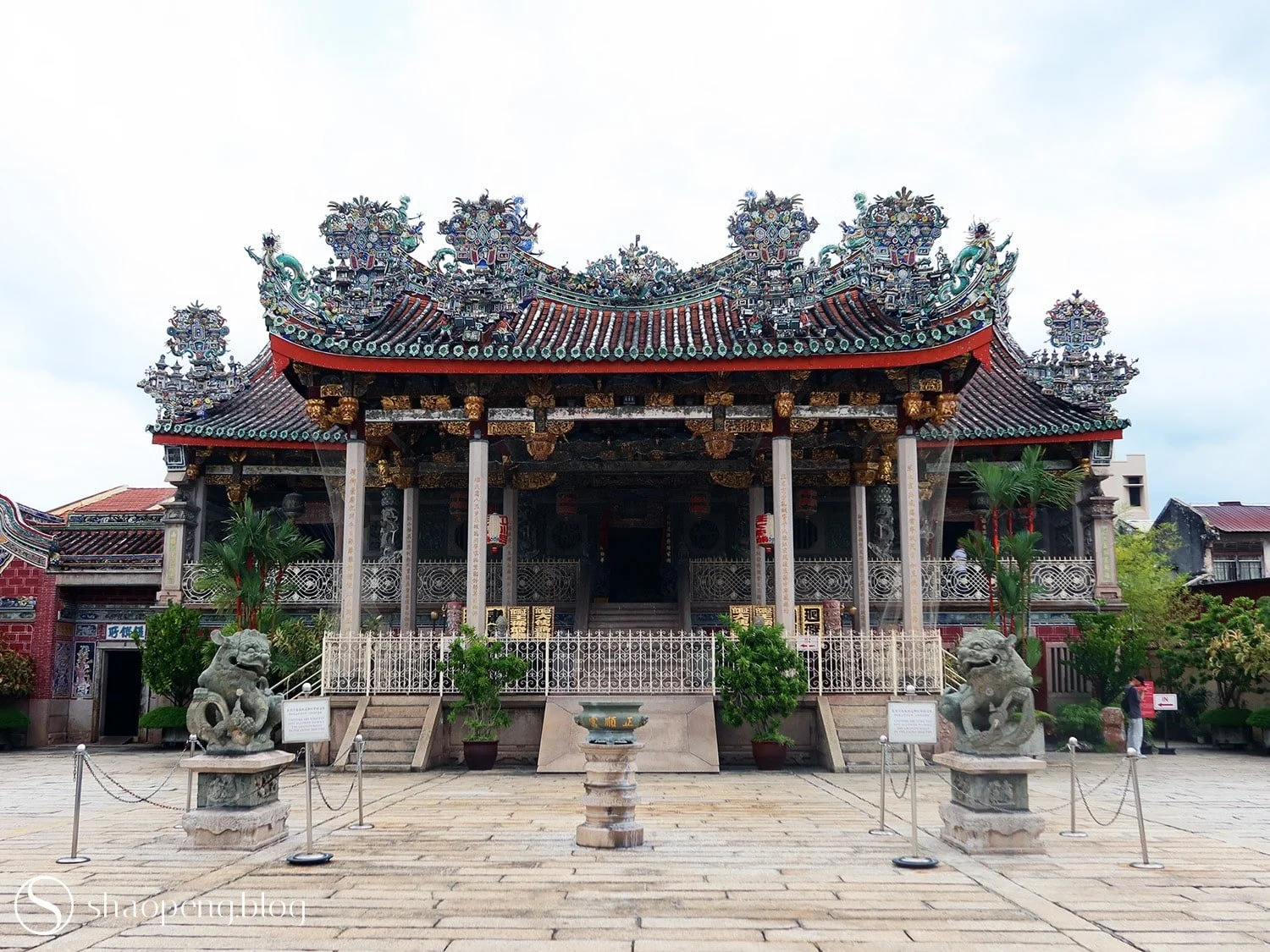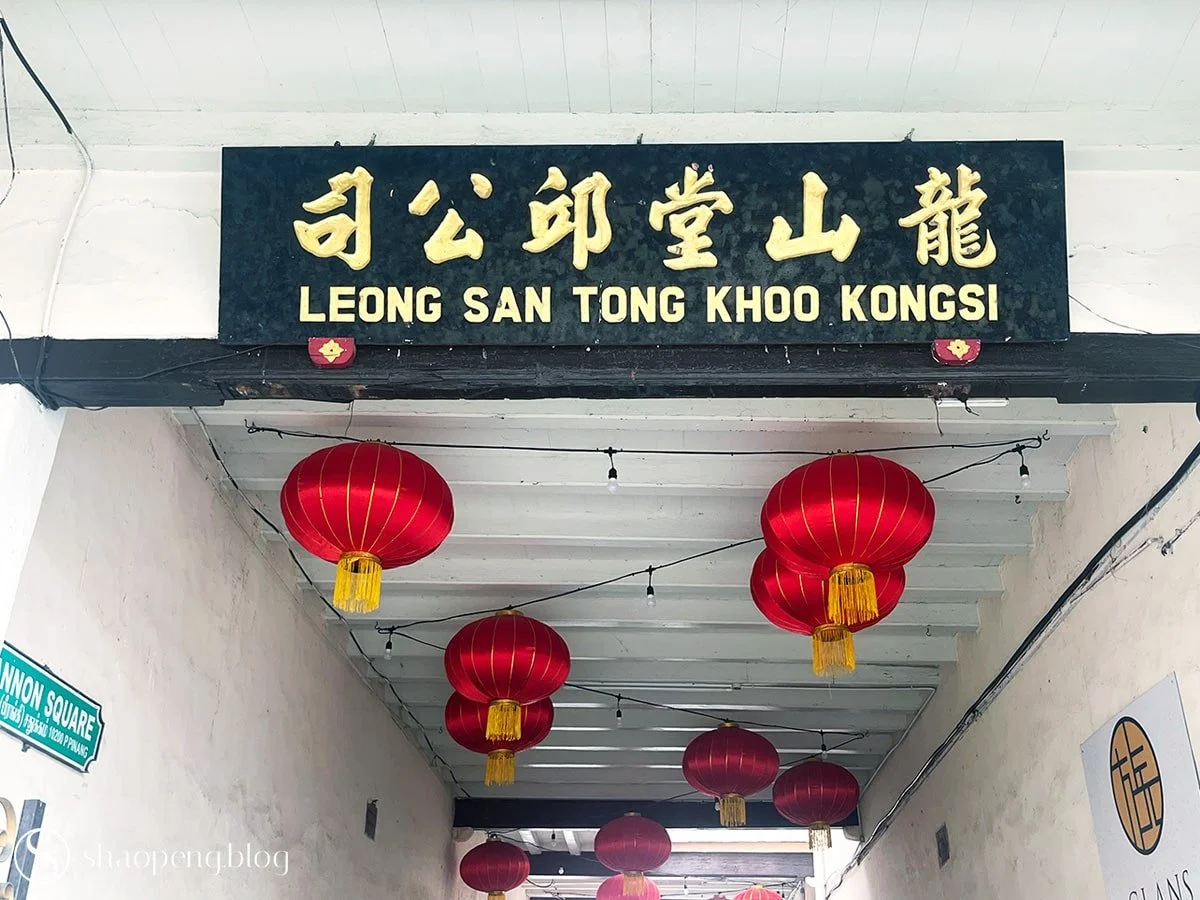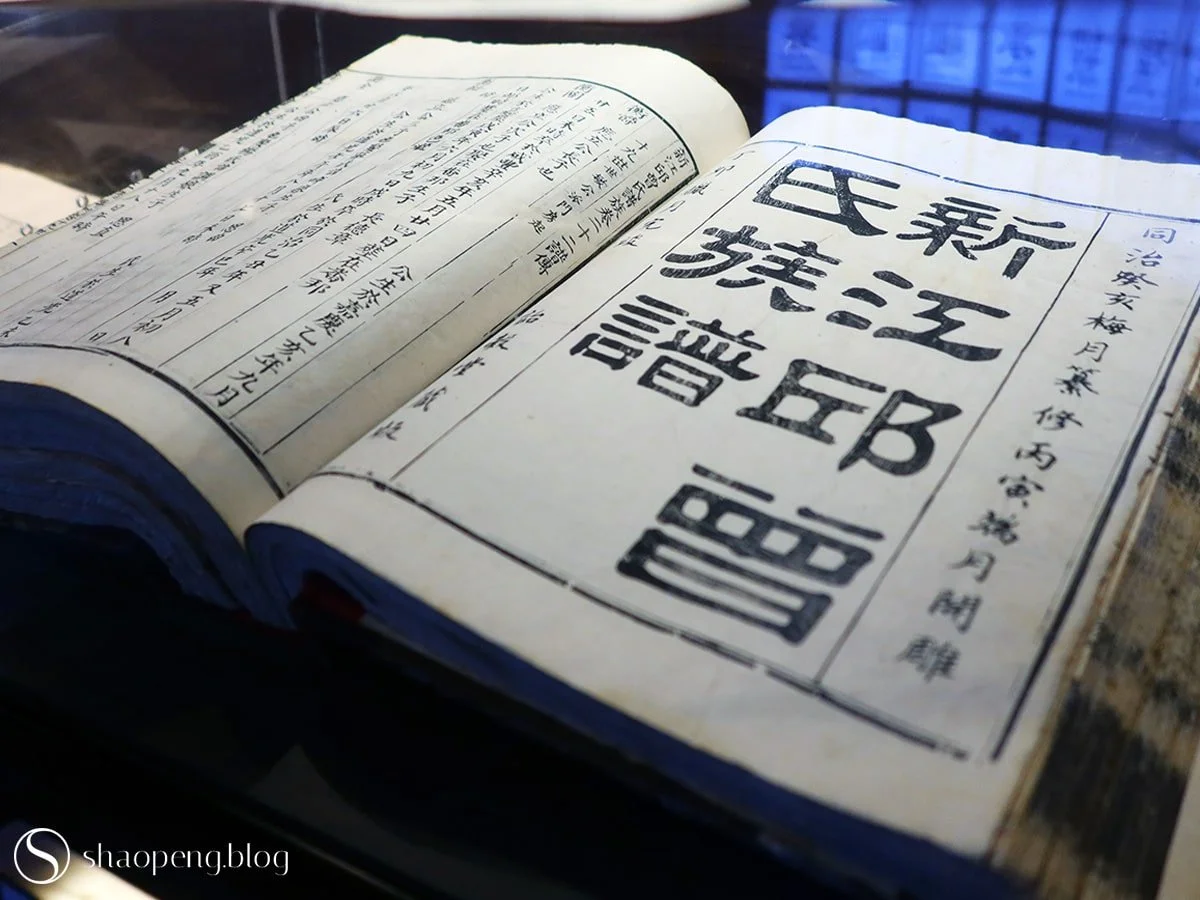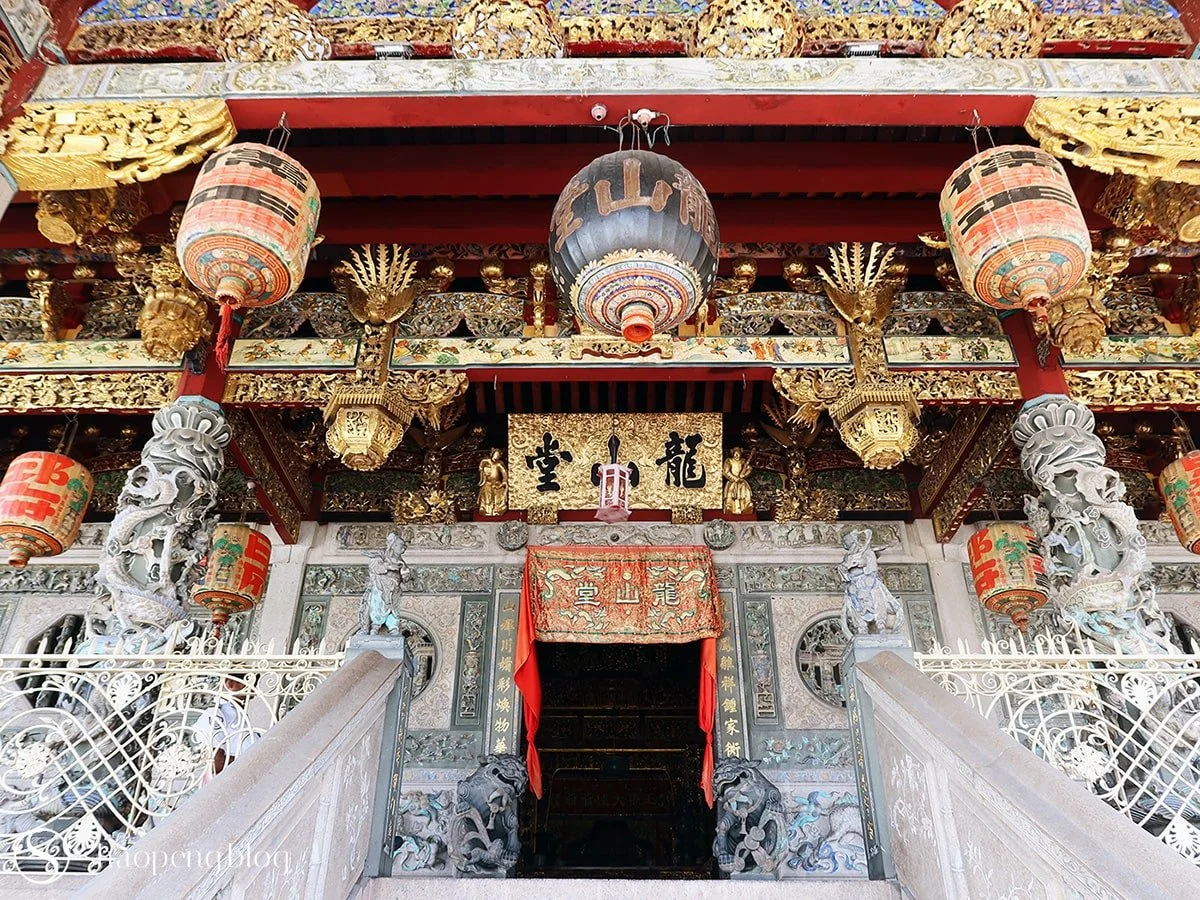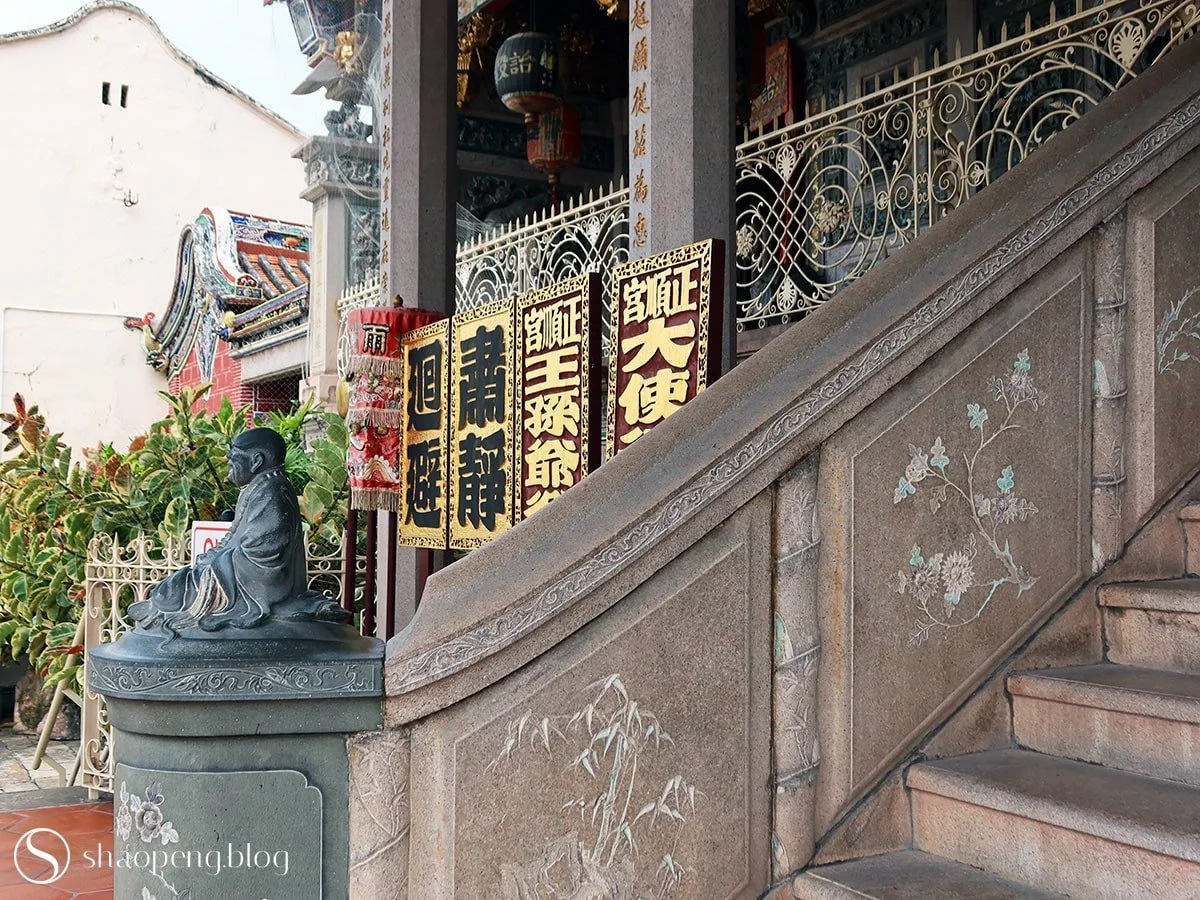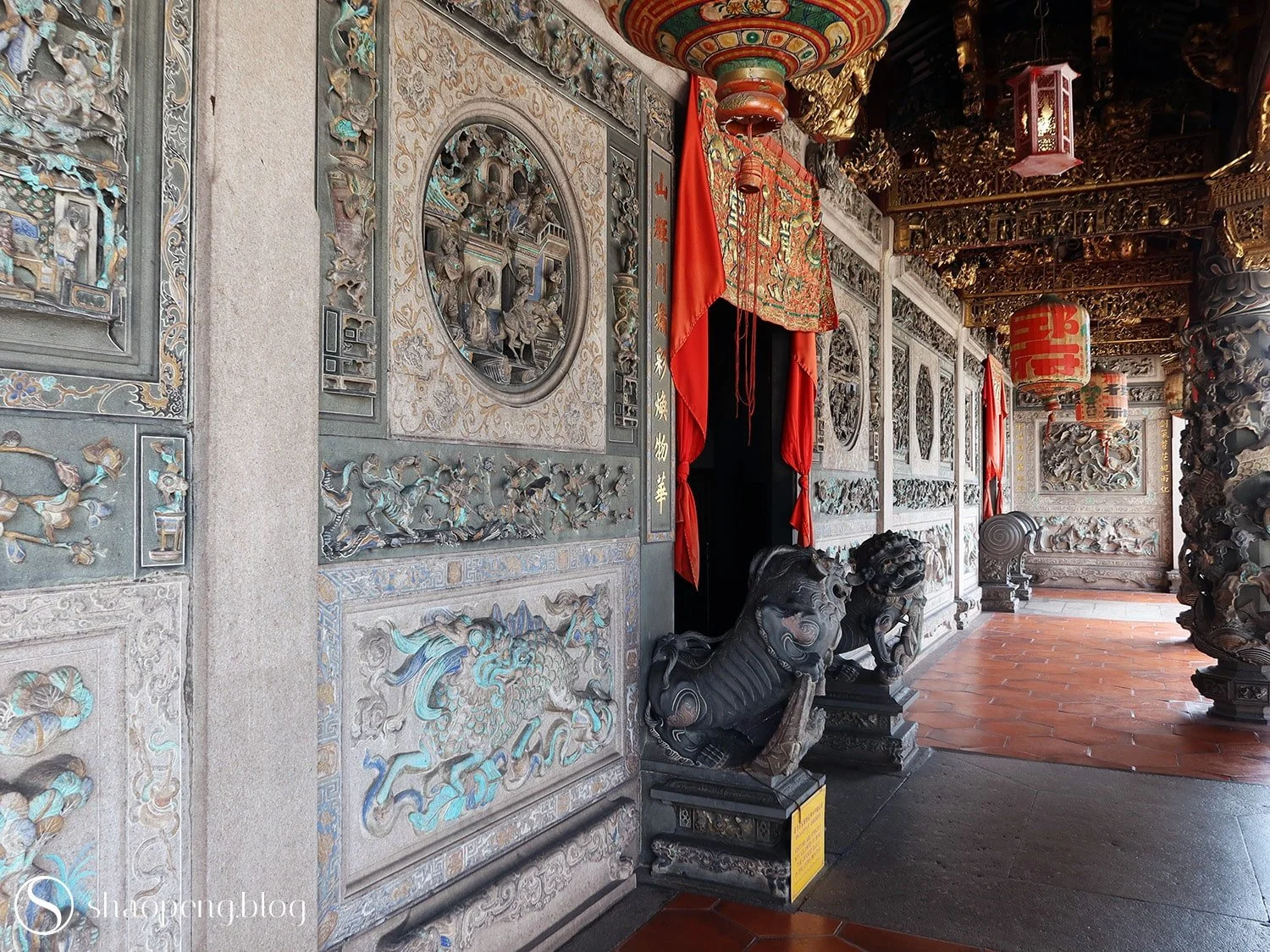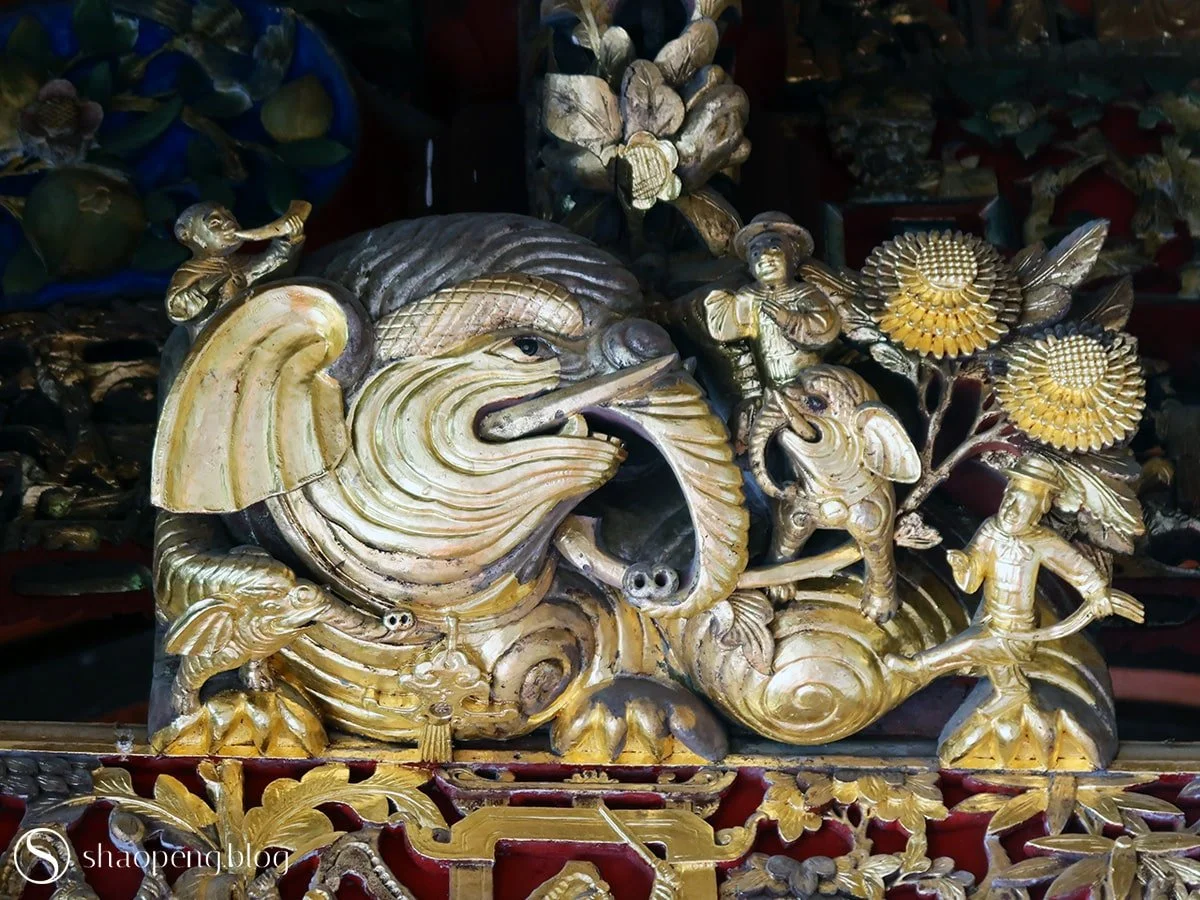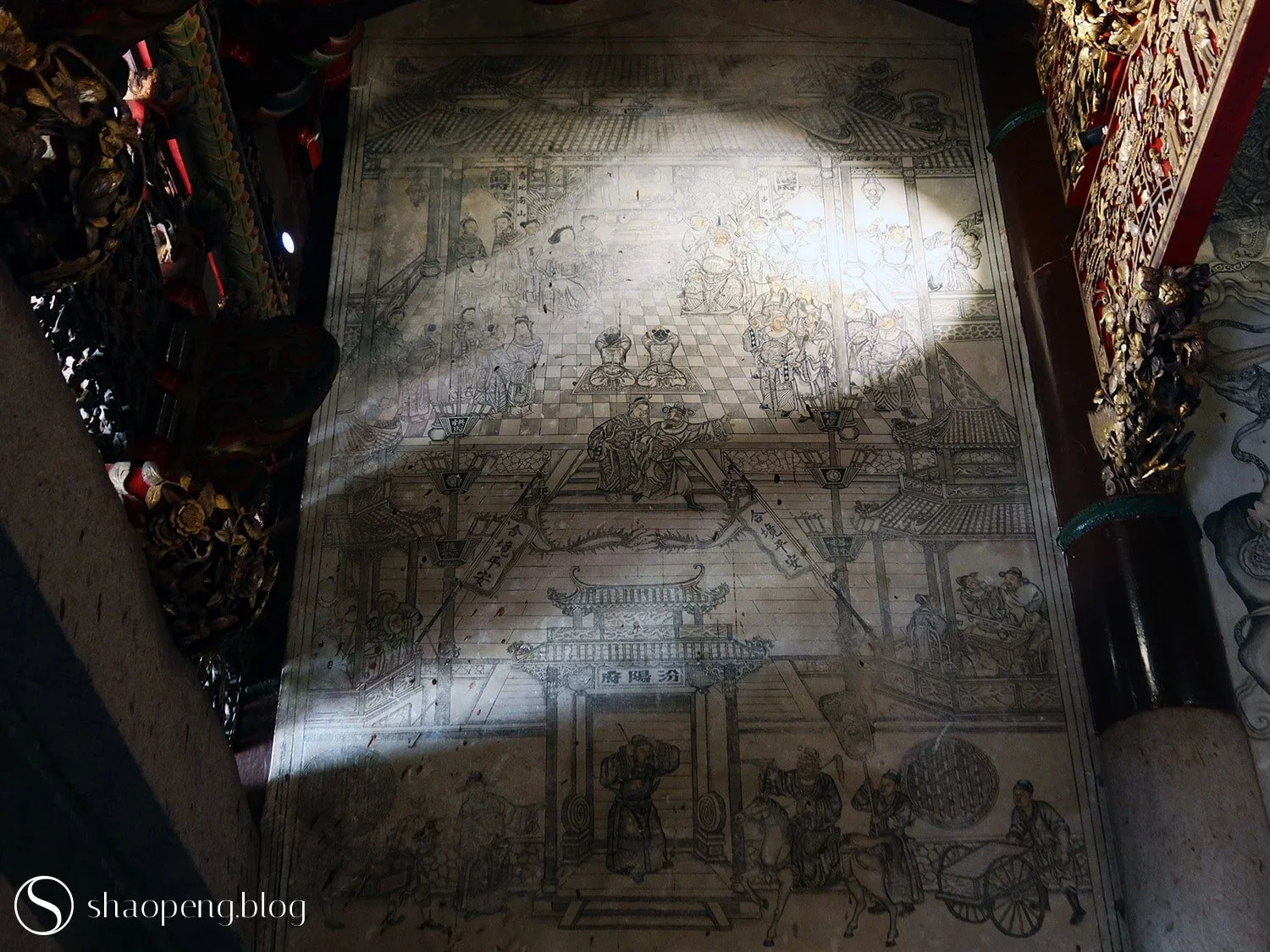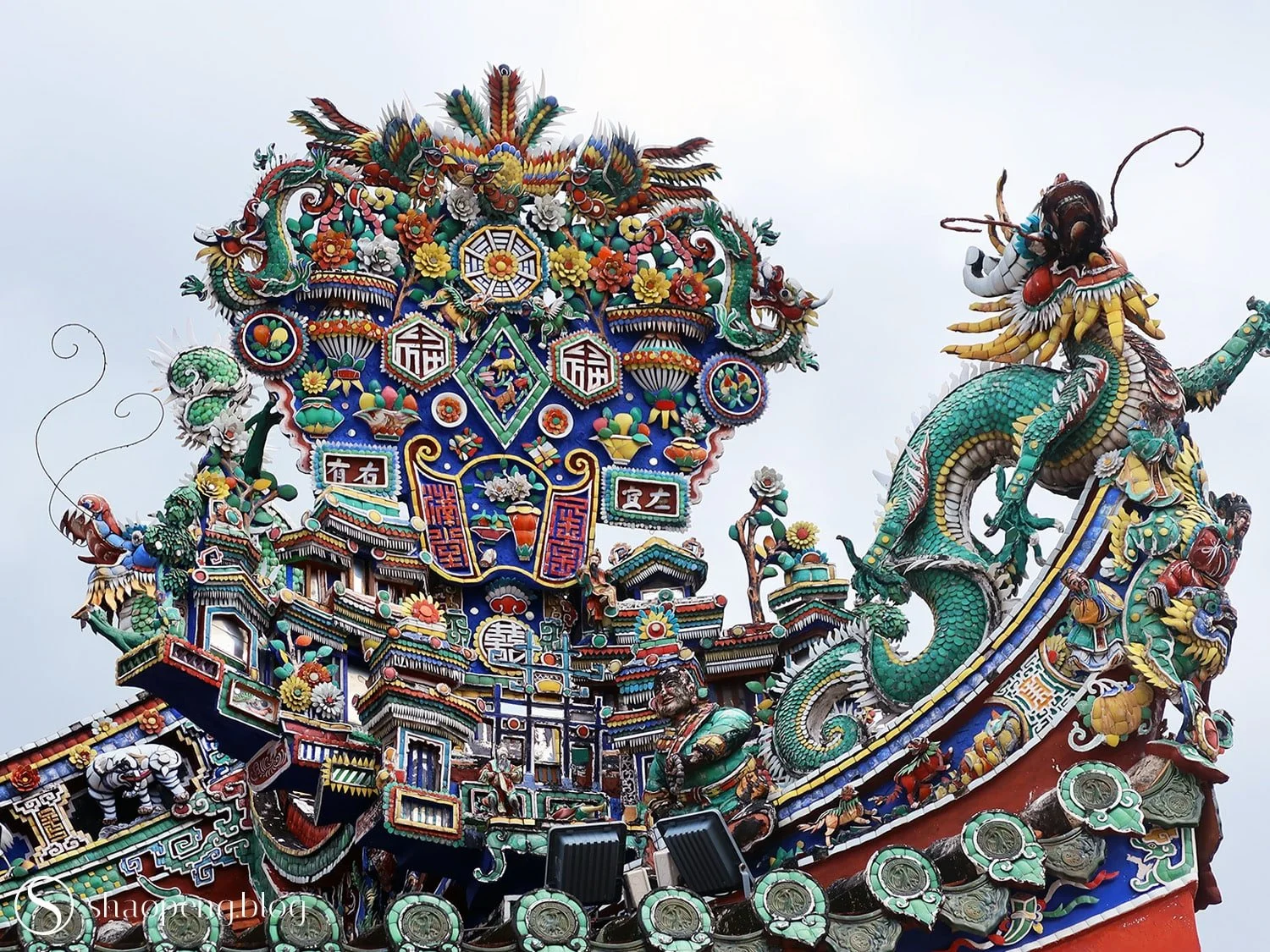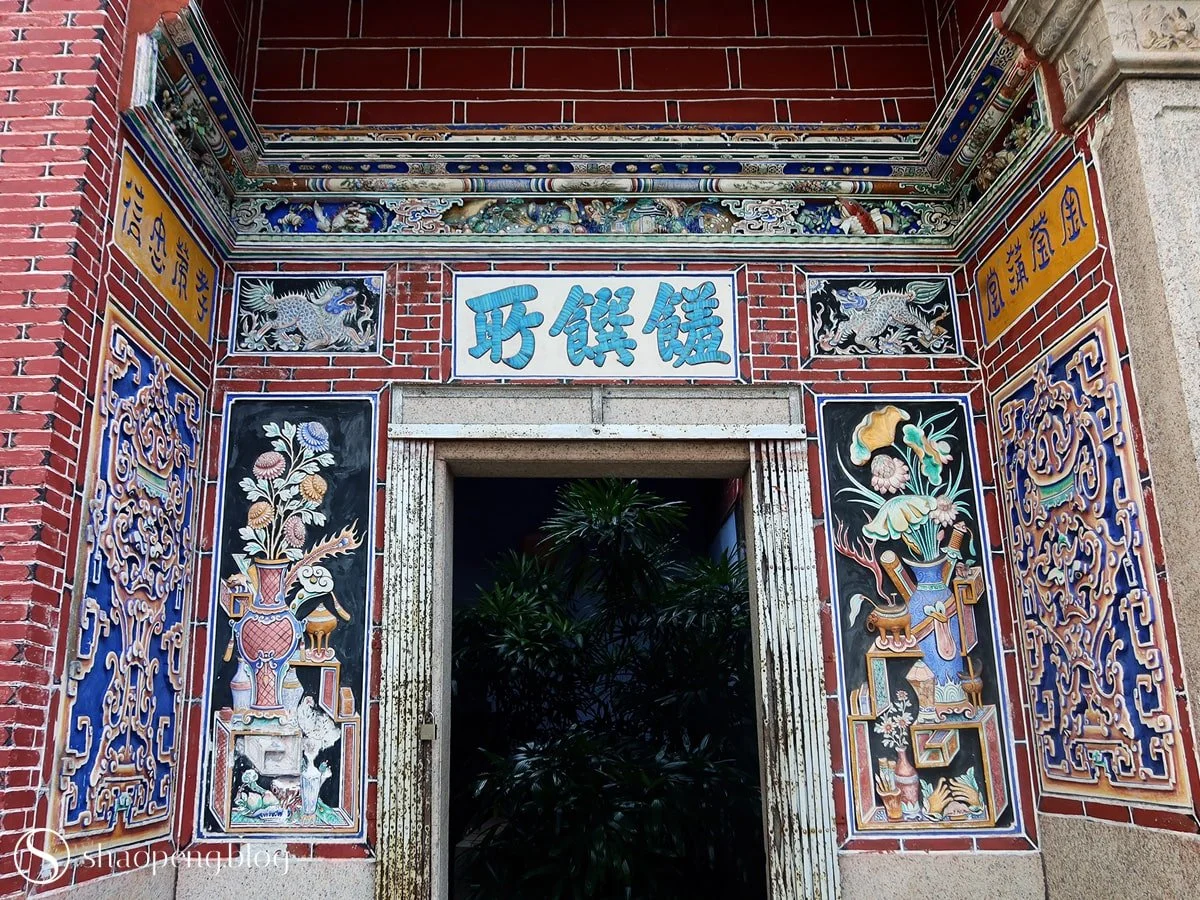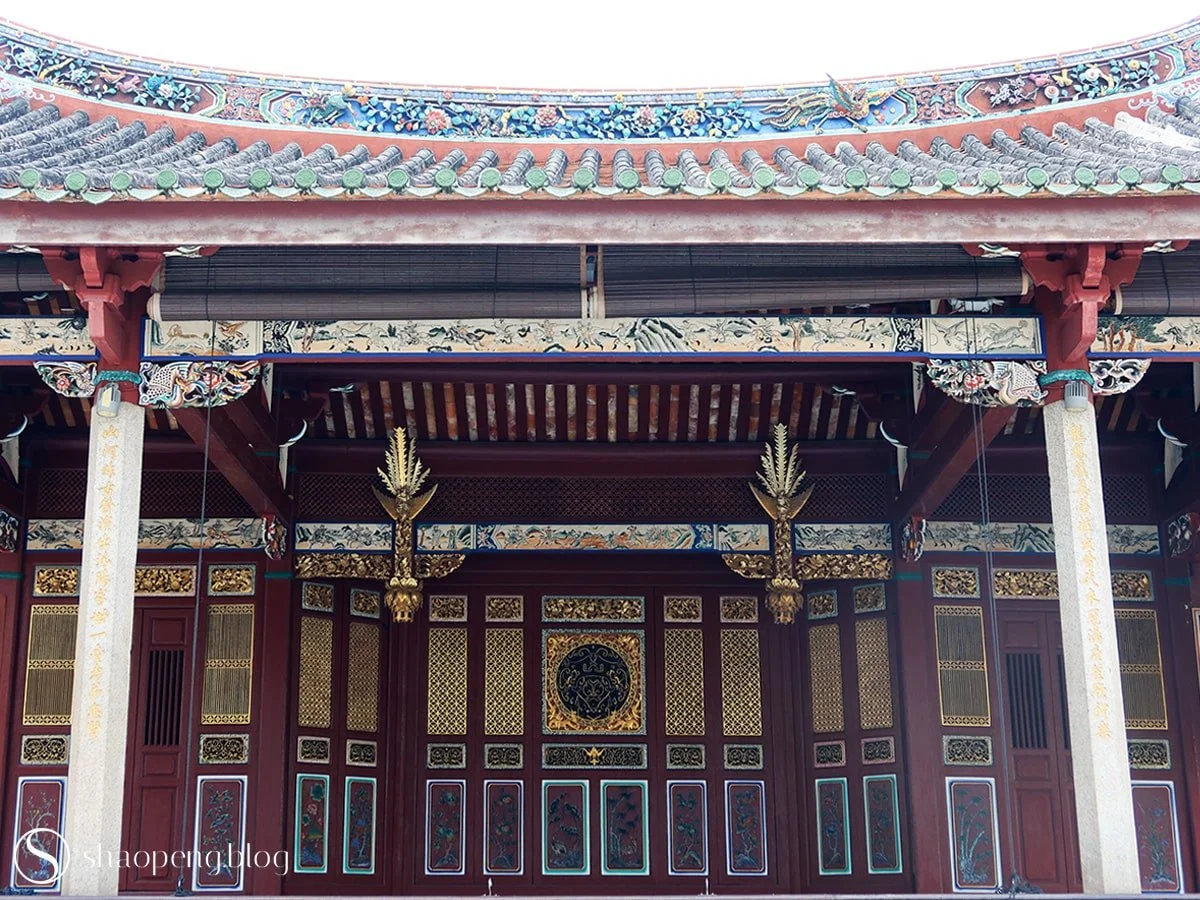Wander in Penang: Leong San Tong Khoo Kongsi
A hidden gem in the heart of George Town, Leong San Tong Khoo Kongsi stands as the grandest clan temple of its kind in Southeast Asia.
Sense of Wander: ★★★★☆
Don’t miss the Leong San Tong Khoo Kongsi — a hidden gem in historic George Town.
GEORGE TOWN, Malaysia — I find myself wandering through the historic centre of George Town, worn from days of walking and exploring. My body feels the weight of the journey, but my eyes remain alert — still searching, still hungry for more. It’s in this state of fatigue that I spot a sign: “Leong San Tong Khoo Kongsi.”
“What is this?” I whisper to myself. The name stirs something in me. I check my phone, and it turns out that I had pinned this place on Google Maps and even jotted it down in my itinerary. But somehow, amid the rearranging and refining of my plans, this place disappeared from the list.
A guard sits at the entrance of an alley, which at first glance seems to lead nowhere. “Can I go inside?” I ask gently. He nods and gestures me in.
Though well-known, Leong San Tong Khoo Kongsi remains a mystery to many — even locals. For first-time visitors, it’s easy to miss. Hidden behind a row of 19th-century terrace houses on Cannon Street, its modest signboard is easily dwarfed by its surroundings. You have to know what you’re looking for.
There’s more than one way in, but the main entrance lies along Cannon Street. After passing the ticket office, you’re guided around the back of the opera stage, through a meeting hall and office. Then, at last, you arrive at a square, where the clan temple — known as the “Kongsi” — stands in solemn grandeur. The journey there, somewhat disorienting, feels almost like walking through a labyrinth. But once you reach there, the reward is undeniable.
Join me in discovering:
A discreet entrance to Leong San Tong Khoo Kongsi, tucked among 19th-century townhouses on Cannon Street.
Khoo Kongsi Explained: Clan, Culture & Community
Tucked within George Town’s historic cocentrere, Leong San Tong Khoo Kongsi is often hailed as the grandest clan temple of its kind in Southeast Asia. It belongs to the Khoo clan, one of the five major Hokkien surnames in Penang, alongside Cheah, Yeoh, Lim, and Tan.
In the past, these clans formed the social backbone of the Hokkien community, each rooted in their own district, stretching from Chulia Street to Beach Street. In this context, the Kongsi — literally “clan hall” or “shared house” — served as a nucleus of communal life. These clan compounds often encompassed rows of terrace houses forming tight perimeters around a central temple. This pattern of living, reminiscent of villages back in ancient China, remains a rare and vivid example of migrant solidarity.
It’s worth noting, though, that not all who bear the Khoo surname belong to this particular clan. The Leong San Tong Khoo Kongsi specifically represents the Khoos of Sin Kang village in Fujian Province — modern-day Sin Aun village on the island of Amoy (Xiamen). All members trace their lineage back to a common ancestor: Xhian Eng Kong.
Genealogy of the Khoo clan from Sin Kang village.
The genealogical chart of Khoo Kongsi features a five-character poem, with each clansman named by the middle character, indicating the generation he belongs to.
Migration began early for the Khoos of Sin Kang village — some as early as the 16th century. Over time, their descendants settled across Southeast Asia: Taiwan, Philippine, Indonesia, Thailand, Burma, Singapore, and the Malay Peninsula. Among all, Penang became a favoured home.
The Khoos arrived here by the late 18th century, shortly after Penang’s founding. Though they came from different branches of the family, they named their clanhouse Leong San Tong, or “Dragon Mountain Hall,” in honour of the Chan lineage in Leong San, Quanzhou Prefecture, the ancestral home of the Sin Kang division.
Khoo Kongsi is one of the prominent clan hubs in historic George Town.
From Ancestry to Architecture: The Birth of Leong San Tong
As the Khoo community in Penang grew, so did the need for a place of ancestral worship and social gathering. In 1835, 102 clansmen came together to establish Ee Kok Tong. Fifteen years later, they acquired the land where the current Khoo Kongsi stands. An old British trading house was transformed into the clanhouse, where the clan deity Tua Sai Yah was venerated.
By the late 19th century, the Khoos had risen to become the most influential Chinese clan in Penang. In 1894, they invited master craftsmen from southern Fujian to construct a new clan temple — an ambitious project that took eight years. But fate intervened. On the eve of the Chinese Lunar New Year, a mysterious fire engulfed the grand new structure, turning it to ashes.
The temple seen today is the result of its reconstruction in 1906. Though it suffered damage during the Japanese occupation in World War II, much of its spirit — and splendour — remains intact.
A grand staircase leads to the entrance of Leong San Tong, which sits on the upper level.
Above the entrance hangs a golden plaque inscribed with “Leong San Tong.”
Where Every Beam Tells a Story: The Architecture of Leong San Tong
Facing northwest, Leong San Tong Khoo Kongsi shares the same orientation as the tomb of its progenitor, Khoo Chian Eng, in Sin Kang village — an alignment rooted in reverence and memory.
Visitors follow a designated path that begins from the right. After ascending a flight of stairs, you arrive at the Prayer Pavilion, an elevated, open structure with an airy ambiance — its relaxed openness recalls the early colonial bungalows with front porches.
Linger here, and subtle juxtaposition of different cultural influences begin to emerge. Though this is unmistakably a Chinese clan temple, its architectural language speaks in more than one voice. Flanking the porch are a pair of turbaned Sikh statues, gazing toward the opera stage opposite the temple — figures both unexpected and striking in this setting. Look upward to the verandah railings on the main hall above, and you’ll notice their Western accent: they were custom-made in England.
Further on, a grand staircase leads to the main hall of Leong San Tong — an ascent unlike most Chinese temples I’ve visited, where halls typically sit at ground level. While the temple itself is firmly rooted in the Minnan style of southern Fujian, this raised layout nods to the Malay stilt house, and even to the Anglo-Malay bungalow that once stood on this site when the Khoo clan acquired the land in 1850.
This architectural elevation also carries symbolic weight. Inspired by fengshui, it embodies the Chinese concept of bu bu gao sheng — rising higher with each step — a blessing for continued success and prosperity.
Throughout this building, stone and wood come together in harmony. High-quality stone has been used generously — in the staircase, in the base walls of the main hall — each surface carved and lovingly painted.
A pair of Sikh watchmen in the Prayer Pavilion adds an exotic touch to this traditional Chinese clan temple.
The wrought-iron fence along the Prayer Pavilion features Western-style swirl and floral motifs.
A laughing Buddha rests at the lower end of the staircase handrail, complementing the crying monk on the other side.
Before you step inside, look above the doorway: a golden plaque bearing the name Leong San Tong, its black calligraphy set against a background alive with dancing dragons and cloud motifs. It is more than a name; it pays homage to the Khoos’ origin in Leong San.
Near the plaque, you’ll see cross-beams with heavy ornaments flowing across every inch. Some carvings shimmer with gold leaf, others explode with vibrant colours — together, they transform structural elements into storytelling.
Crossing the threshold, you enter the main hall, known as Cheng Soon Keong. A hush settles in the air. This space is dedicated not to ancestral worship, but to deified figures such as Ong Soon Yah and Tua Sai Yah, whose blessings are sought not just by Khoo clansmen but by the wider public.
Here, you’ll also find other deities beloved by the local community: Kuan Im (Goddess of Mercy), Poh Seng Tai Tay (God of Medicine), and Mah Chor Poh (Goddess of the Sea), among others — each revered with incense, offerings, and whispered prayers.
The Khoo ancestors, by contrast, are venerated in the adjoining hall, Ee Kok Tong. What catches my attention here, however, are not the ancestral tablets but the plaques of recognition lining the side walls. These commemorate outstanding achievements of Khoo descendants — from imperial exam honours in the Qing dynasty (1644-1911) to state awards from the mid-20th century, showcasing record of excellence across generations.
The facade of the veranda is beautifully adorned with carvings of traditional Chinese folklore, legends, and history.
Among the rich array of auspicious animals — a hallmark of Minnan architecture — carved into the building’s timberwork is the elephant, a symbol of prosperity and blessings.
Deities are venerated within Cheng Soon Keong.
An intricate yet grand mural painting inside Cheng Soon Keong depicts the “Birthday Celebration of Guo Ziyi,” a legend from the Tang dynasty (618-907)
Stories, both carved and painted, fill the corridors and inner sanctums. In Cheng Soon Keong and along the rear corridor, you’ll find vivid depictions of Confucian moral tales: Twenty-Four Exemplars of Filial Piety to remind descendants of their duties; A Hundred Sons and A Thousand Grandsons that symbolises the joy of abundant family; and The Fisherman, The Woodsman, The farmer, and The Scholar — four archetypes of a traditional, self-sustaining life rooted in diligence and virtue.
Yet perhaps the most remarkable feat of all lies above — on the rooftop. Its sweeping curves and upturned eaves, reminiscent of a swallow’s tail, mark it unmistakably as Minnan. But what truly sets it apart is the abundant use of jiannian — intricate inlaid porcelain craft. Fragments of ceramic and glass are broken (jian) and assembled (nian) into vibrant scenes that crest and curl along the roofline.
One ridge holds a remarkable decoration: a boat-shaped form encrusted with jiannian, standing nearly three metres tall — the only example of its kind in Malaysia. Scattered along the roof are other ships as well, each a tribute to the Khoo clan’s sea-crossing generations ago, when they left their village behind and arrived on these shores in search of new beginnings.
The roof ridge of Leong San Tong Khoo Kongsi is adorned with intricate jiannian craft.
The kitchen entrance, decorated with auspicious motifs and symbols, sits at ground level.
Beyond the Temple Walls: The Khoo Clan’s Enduring Legacy
It’s worth noting that the influence of the Khoo clan extended far beyond its clan temple, reaching into areas such as education, finance, and social welfare.
In 1907, Khoo Kongsi established a school in Penang, offering free education to the children of Khoo clansmen. Following the Second World War, a new school was built at Thean Teik Estate to meet the growing demand for education. Opened to the public in 1954, it was later incorporated into the national education system in 1958.
Today, Khoo Kongsi owns more than 200 residential and shophouses in George Town and Thean Teik Estate (Bandar Baru, Air Itam), along with plantations and landed properties elsewhere — making it one of the wealthiest Chinese clan associations in Malaysia.
At one time, Khoo Kongsi even offered quasi-banking services to its clansmen, including savings accounts. These services came to an end in 1969, but the association continues to provide old-age relief for clansmen in need.
The clan is now overseen by a board of trustees made up of representatives from the four sectional groups — collectively known as See Tua Kak — formed by descendants of the Khoos from the fourth to eighth generations. Today, Khoo offspring have reached the 27th generation.
A beautiful opera stage stands opposite Leong San Tong, where traditional Chinese opera performances were staged to honour and entertain deities and ancestors.
Wanderer’s tip — If you’re keen on delving deeper into the history and architecture of the place, I recommend picking up the comprehensive visitor’s guide at the ticket office — it’s just 2 ringgit. Otherwise, a good place to begin is the exhibition hall on the ground floor, where you’ll find detailed insights into the origins of the Khoo clan, the history of Leong San Tong Khoo Kongsi, and the symbolism behind its architecture design.
Reference:
Choo, C. K., & Tan, Y. W. (Eds.). (2004). Discovery: Leong San Tong Khoo Kongsi (2nd ed.). Trustees of Leong San Tong Khoo Kongsi, Penang (Registered).

